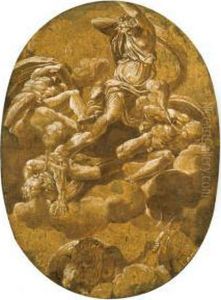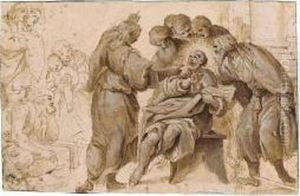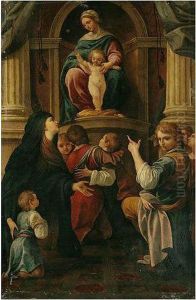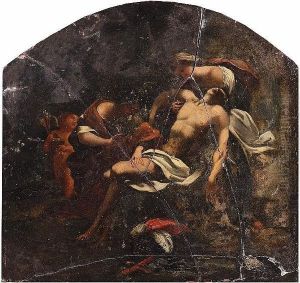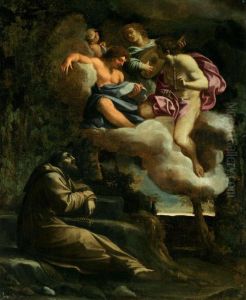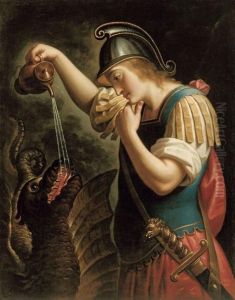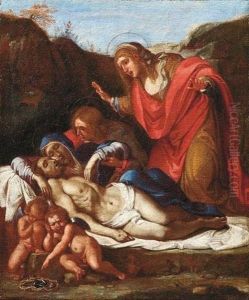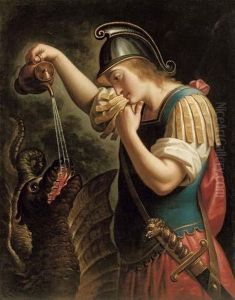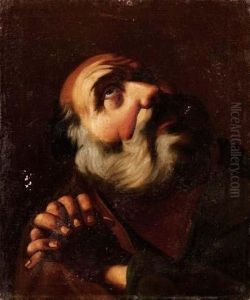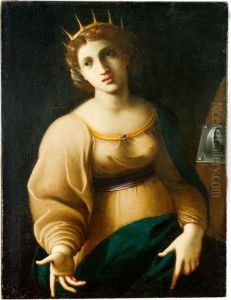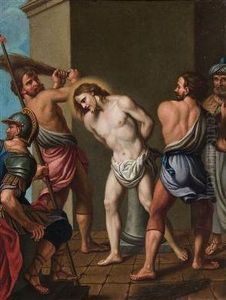Lorenzo Garbieri Il Nepote Paintings
Lorenzo Garbieri, known as Il Nepote due to his uncle Bartolomeo Cesi being a prominent painter, was an Italian artist born in 1580 in Bologna, Italy. He was a significant figure in the early Baroque period, contributing to the development of the Bolognese School. Garbieri's artistic journey began under the guidance of his uncle, from whom he acquired the fundamentals of painting. He further honed his skills and developed his unique style after studying the works of Ludovico Carracci and other masters of the Carracci Academy, a pivotal institution in Bologna that played a crucial role in the evolution of Baroque art in Italy.
Garbieri's work is characterized by its dynamic compositions, dramatic use of light and shadow, and intense emotional expressions. He was adept at both religious and mythological subjects, bringing a vivid narrative quality to his canvases. Among his notable works are the 'Virgin and Child Enthroned with Saints' for the church of San Petronio in Bologna and 'The Martyrdom of Saint Lawrence' which showcases his skill in depicting dramatic scenes with a strong emotional impact.
Throughout his career, Garbieri received commissions from various religious orders and institutions, which helped establish his reputation as a leading painter in Bologna. His works were not only appreciated in his native city but also in other parts of Italy, contributing to the spread of the Baroque style.
Despite his success, Lorenzo Garbieri's life and career are not as well-documented as some of his contemporaries, leading to a somewhat enigmatic legacy. However, his contributions to the Baroque movement and the Bolognese School are undeniable, making him an important figure in the history of Italian art. Garbieri passed away in 1654 in Bologna, leaving behind a body of work that continues to be studied and admired for its artistic merit and historical significance.
